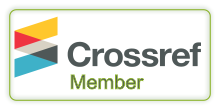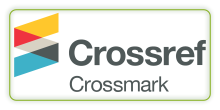AMLA SKANDHA OF CHARAK SAMHITA: A CRITICAL REVIEW
DOI:
https://doi.org/10.29121/jahim.v2.i2.2022.25Keywords:
Amlarasa, Amla Skandha, Sour Taste, RuchikaraAbstract [English]
Introduction: In Ayurveda Rasa i.e., taste of a drug plays a very important role. Total six tastes are depicted in Ayurveda are Madhura (sweet), Amla (Sour), Lavana (Salty), Katu (Pungent), Tikta (Bitter)and Kashaya (Astringent). The principles of pharmacology of Ayurveda clearly mentions that taste of drug contributes to the action of drug. The action of drug starts from mouth and amla rasa i.e., sour taste has a significant role in creating interest in food. In Charaksamhita the drugs are classified in six groups based on Rasa. Amlaskandhas is one group out of six.
Material and Method: The dravya enlisted in amlaskandha were looked for their properties and actions in Vegetable drugs in Bruhattrayi, Bhavprakash Nighantu, Nighantu Adarsh Vaidya (2013) Then the contemporary research papers were surveyed for the pharmacological actions of dravya. The data compiled was critically analysed and presented in tabular form for making the skandhas more applicable practically.
Result and Discussion: There are total 32 dravya in Amla skandhas. all dravyas have actions like Deepan and Ruchikara i.e., they are enhancing appetite and increasing interest in food .15 Dravya out of 32 were found to be rich Source of Vitamin C.
References
Arif, M., Rahman, M.A., Imran, M., and Khalid, M. (2015). An Insight of Spondias Mangifera Willd : An Underutilized Medicinal Plant with Immense Nutraceutical and Therapeutic Potentials. International Journal of Research in Pharmaceutical Sciences, 6(2), 17-26.
Arun, N., and Singh, D. P. (2012). Punica Granatum : A Review on Pharmacological and Therapeutic Properties. Journal of Pharmaceutical Sciences and Research 3(5), 1240-1245.
Bhavmishra (2015). Bhavaprakasha Nighantu, Commentary by Padmashri prof. K. C. Chunekar, Edited by Late. Dr. G. S. Pandey, Chaukhambha Bharati Academy, Varanasi, Reprint Edition.
Das, M., & D., A. K. (2013). Phyto-pharmacological review of Portulaca quadrifida Linn. Journal of Applied Pharmaceutical Research, 1(1), 01-04.
Fatima, M., Ahmed, S., Siddiqui, M. U. A., and Hasan, M. M. U. (2021). Medicinal Uses, Phytochemistry and Pharmacology of Bauhinia Racemosa Lam. Journal of Pharmacognosy and Phytochemistry, 10(2), 121-124. https://doi.org/10.22271/phyto.2021.v10.i2b.13972.
Fei, L., Lixia, P., Ziqin, L., Xiyu, J., Junbo, Z., Yan, Y., Xirui, H., Nan, Z. (2021). Traditional Uses, Phytochemical Constituents and Pharmacological Properties of Averrhoa Carambola L. : A Review. Frontiers in Pharmacology, 12. https://doi.org/10.3389/fphar.2021.699899.
Gaire, B.P., Subedi, L. (2014). Phytochemistry, Pharmacology and Medicinal Properties of Phyllanthus Emblica Linn. Chinese Journal of Integrative Medicine. https://doi.org/10.1007/s11655-014-1984-2.
Gualdani, R., Cavalluzzi, M. M., Lentini, G., & Habtemariam, S. (2016). The Chemistry and Pharmacology of Citrus Limonoids. Molecules (Basel, Switzerland), 21(11), 1530. https://doi.org/10.3390/molecules21111530.
Hutke, V. D., and Naswale, M. P. (2020). Evaluation of in Vitro Antioxidant Activity of Different Solvent Extracts from Grewia Hirsuta (Vahl). International Journal of Advanced Research in Biological Sciences, 7(10), 110-115. http://dx.doi.org/10.22192/ijarbs.2020.07.10.010.
Jena, B., Ratha, B., & Kar, S. (2012). Wound Healing Potential of Ziziphus Xylopyrus Willd. (Rhamnaceae) Stem Bark Ethanol Extract Using in Vitro and in Vivo Model. Journal of Drug Delivery and Therapeutics, 2(6). https://doi.org/10.22270/jddt.v2i6.316.
Kumar, G., and Badoni, P. P. (2017). Antimicrobial Activity of Rhus parviflora Roxb. : Leaves Extract Mediated Synthesized ZnO Nanoparticles. International Journal of ChemTech Research, 10(7), 377-381.
Kundusen, S., Gupta, M., Mazumder, U. K., Haldar, P. K., Saha, P., & Bala, A. (2011). Antitumor Activity of Citrus maxima (Burm.) Merr. Leaves in Ehrlich's Ascites Carcinoma Cell-Treated Mice. ISRN pharmacology, 2011, 138737. https://doi.org/10.5402/2011/138737.
Mahajan, R. T., and Chopda, M. Z. (2009). Phyto-Pharmacology of Ziziphus jujuba Mill- A Plant Review. Pharmacognosy Reviews, 3(6), 320-329.
Panara, K., Joshi, K., and Nishteswar, K. (2012). A Review on Phytochemical and Pharmacological Properties of Citrus Medica Linn.
Pande, C., Tewari, G., Singh, C., Singh, S., Padalia, R. C. (2009). Chemical Composition of the Essential Oil of Feronia Elephantum Correa. Natural Product Research, 24, 1807-1810. https://doi.org/10.1080/14786411003752078.
Parvez, G. M. M. (2016). Pharmacological Activities of Mango (Mangifera Indica) : A Review GM Masud Parvez, Journal of Pharmacognosy, 5(3), 01-07.
Patel, T., and Saraf, M. (2016). A Review on the Pharmacology of Coleus Forskohlii Briq : A Threatened Medicinal Plant.
Salawu, K.M., Oyerinde, A.A., and Bello, R. H. (2021). Antiproliferative and Antimicrobial Activities of Citrus limon (L.) Burm. f. Stem Bark Extract. Nigerian Journal of Basic and Applied Science, 29(1), 49-54.
Sarma, R., Das, M., Mudoi, T., Sharma, K. K. Kotoky, J., Devi, R. (2016). Evaluation of Antioxidant and Antifungal Activities of Polyphenol-rich Extracts of Dried Pulp of Garcinia pedunculata Roxb. And Garcinia morella Gaertn. (Clusiaceae). Tropical Journal of Pharmaceutical Research, 15(1), 133-140. https://doi.org/10.4314/tjpr.v15i1.19.
Srikanth M., Swetha, T., and and Veeresh, B. (2012). Phytochemistry and Pharmacology of Oxalis Corniculata Linn. : A Review. International Journal of Pharmaceutical Sciences and Research. http://dx.doi.org/10.13040/IJPSR.0975-8232.3(11).4077-85.
Tarafdar, R. G.,Nath, S., Talukdar, A. D., Choudhury, M. D. (2016). Cicca Acida L. : Phytochemistry and Pharmacological Studies. Wiley Online Library, 68(2), 148-158. https://doi.org/10.1111/jphp.12514.
Tesfaye, T., and Ravichadran, Y. D. (2018). Traditional Uses, Pharmacological Action and Phytochemical Analysis of Carissa carandas Linn. : A Review. Natural Products Chemistry & Research Biology, 6(5). https://doi:10.4172/2329-6836.1000334.
Vaidya, V. B. (2013). Nighantu Adarsha (Vol-1). Chaukhambha Bharati Academy, Varanasi.
Vanajakshi, M., Virupaksha, J. H., and Maria, S. (2016). A Review on Pharmacological Actions of Artocarpus lacoocha Roxb. Research Journal of Pharmacology and Pharmacodynamics, 8(4), 181-184. https://doi:10.5958/2321-5836.2016.00033.1.
Wang, Y., Qian, J., Cao, J., Wang, D., Liu, C., Yang, R., Li, X., & Sun, C. (2017). Antioxidant Capacity, Anticancer Ability and Flavonoids Composition of 35 Citrus (Citrus reticulata Blanco) Varieties. Molecules (Basel, Switzerland), 22(7), 1114. https://doi.org/10.3390/molecules22071114.
Yadav, T. (2011). Charaka samhita of Agnivesha, Sutrasthana Atreybhadrakapiya Adhyay 26/43 2 Edition by Reprint, Chaukhambha surabharati prakashana, Varanasi.
Yadav, T. (2011). Charaka samhita of Agnivesha, Sutrasthana Dirghamjivantiyam Adhyay 1 /66 Edition by Reprint, Chaukhambha surabharati prakashana, Varanasi.
Yadav, T. (2011). Charaka samhita of Agnivesha, Sutrasthana Indriyopkramaniya Adhyay 8/138 Edition by Reprint, Chaukhambha surabharati prakashana, Varanasi.
Yadav, T. (2011). Charaka samhita of Agnivesha, Sutrasthana Yajjapurishiya Adhyay 26 /72 Edition by Reprint, Chaukhambha surabharati prakashana, Varanasi.






























